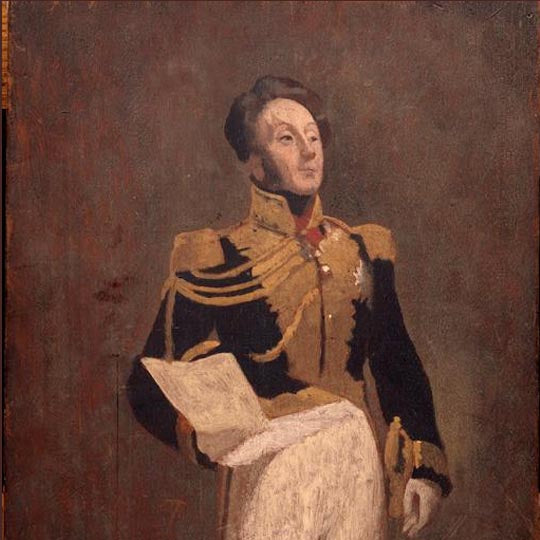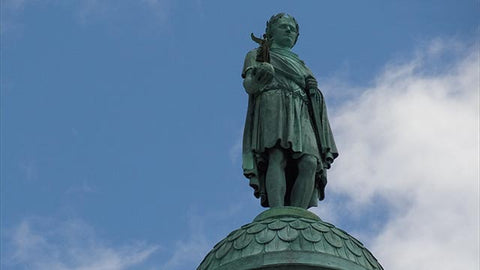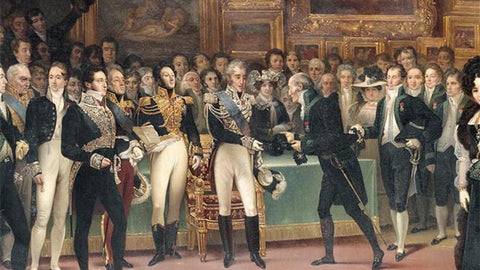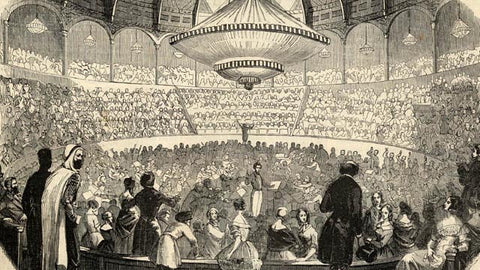
The Royalist Rochefoucauld
Share
This text was inspired by a list of selected customers from the Old Snuff House of Fribourgh and Treyer, at the Rasp and Crown, No. 34 St-James Haymarket, London, S.W (1720-1920).
Louis François Sosthènes I, Viscount of La Rochefoucauld (Paris, February 19, 1785 – Château d'Armainvilliers (Seine-et-Marne), October 5, 1864), is a French ultraroyalist politician of the 19th century.
From 1814 to 1836, he was aide to Charles, Count of Artois (future Charles X) and from 1824 to 1830 his director of fine arts. Deputy in the Chamber in 1815 and in 1827-1830, he retired from public life after the July Days of 1830.

The part he took in organizing the "public rejoicing" at the fall of Napoleon and the "reestablishment of the legitimate throne", the initiative he took to have the statue of the Emperor brought down on the Vendôme column excluded him from the amnesty that Bonaparte promulgated, on his return from the island of Elba, in favor of those who had cooperated in the first Restoration.
Viscount de La Rochefoucauld accompanied Louis XVIII to Ghent, and was appointed, during the second Restoration, colonel of the 5th legion of the national guard of Paris and aide to Charles, Count of Artois. Elected on August 22, 1815, deputy for Marne, to the departmental college, he voted with the ultraroyalist majority and proposed expiatory ceremonies for the anniversary of the execution of Louis XVI. He could not be re-elected in 1816, not having the newly required age.
Remaining aide to the Count of Artois, he continued his influence in favor of absolute monarchy by pushing Madame du Cayla, with whom he was intimate, to Louis XVIII, influencing the king through her. Sosthène was a Frenchman known for his strong support for absolute monarchy in contrast to his relative, Duke François de La Rochefoucauld-Liancourt. In August 1824, King Louis XVIII appointed him as the Director-General of Fine Arts, Royal Theaters, and Manufactures.

After King Louis XVIII's death, Rochefoucauld-Doudeauville selected Victor Hugo as the official poet for the coronation of Charles X of France. In the same year, he tried to gain control of newspapers using royal funds but faced challenges, particularly from Joseph-François Michaud, a royalist journalist. He served as Director of a department within the Ministry of the Interior but remained an independent and sometimes troublesome ally of the government. He was involved in the acquisition of artworks and played a role in commissioning official paintings and sculptures.
He chaired a commission in 1825-1826 to prepare a bill on literary property, proposing a copyright duration of 50 years, which failed. Sosthène was responsible for overseeing the production of textiles at the Gobelins. He supported the Royal Institution of Religious Music and ensured its existence. He played a role in enabling Hector Berlioz to give his first concert in 1828, thanks to his intervention.

Sosthène de La Rochefoucauld-Doudeauville served as a deputy in the Chamber of Deputies from 1827 to 1830, representing the Marne constituency. He aligned with the political right. He voted against the July Monarchy and faced legal troubles due to his opposition to the new regime. He was emprisinned in 1833 due to his pro-royalist writings. La Rochefoucauld spent several months in prison but was released after the fall of Robespierre in July 1794. The position of Director of Fine Arts remained vacant after his departure from public life.
After the tumultuous years of the French Revolution, La Rochefoucauld lived a more private and less politically active life. He died on September 14, 1848, in Paris, well into the era known as the July Monarchy, which followed the Bourbon Restoration. Louis François Sosthènes, Vicomte de La Rochefoucauld, is remembered as a figure who navigated the turbulent political landscape of the French Revolution and the Reign of Terror. His political alignments and his subsequent imprisonment and release provide insights into the complex and shifting allegiances of the time.
